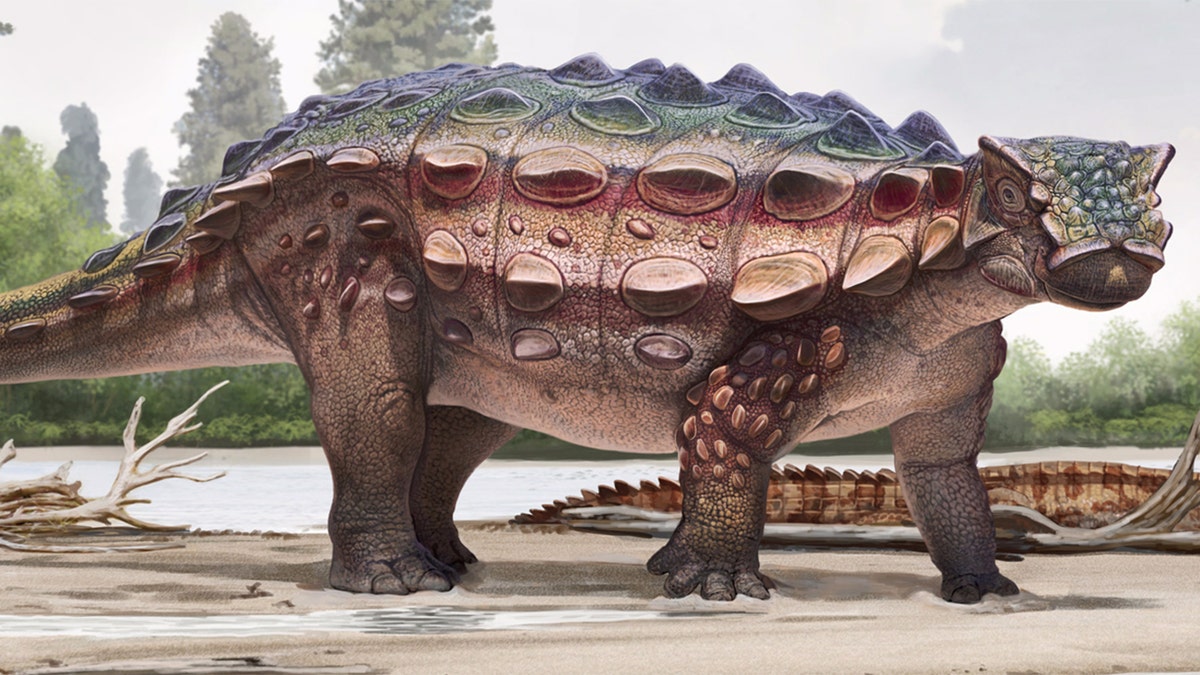
Measuring between 13 and 16 feet in length and 3.5 feet tall, Akainacephalus jonhnsoni is slightly smaller than its more well known cousin, Ankylosaurus. (Andrey Atuchin and the Denver Museum of Nature & Science)
Researchers have unearthed a new armored dinosaur in Utah, a new species of ankylosaur, known as Akainacephalus johnsoni.
The catch? It lived on the lost continent known as Laramidia.
A. johnsoni, a member of the ankylosaurid family, lived 76 million years ago in what is now southern Utah, but was once a land mass known as Laramidia, an island continent that split North America in two. Eventually, the sea shrank and the two parts combined to form what is now known as North America.
33-FOOT-LONG DINOSAUR, BIGGER THAN KING KONG, UNEARTHED IN ARGENTINA

A Natural History Museum of Utah field crew excavate bones from the skeleton of Akainacephalus johnsoni in 2009. (Credit: Randall Irmis/Natural History Museum of Utah)
The genus name means "spike head," but johnsoni is an homage to Randy Johnson, a retired chemist who helped prep the skull.
"I'm a retired chemist, but I've always been interested in most of the science disciplines. I never thought that I would have the opportunity to actually work on fossils that could be important for paleontologists," Johnson said in a statement.
Johnson, who volunteers at the museum, added that working with paleontologists was a dream second career. "I couldn't believe it when they told me they are naming the ankylosaur after me, a once-in-a-lifetime honor," he said.
The fossil is now at the National History Museum of Utah in Salt Lake City.
The findings have been published in the scientific journal PeerJ, authored by Jelle Wiersma and Randall Irmis.
T. REX COULDN'T STICK OUT ITS TONGUE
Measuring between 13 and 16 feet in length and 3.5 feet tall, Akainacephalus jonhnsoni is slightly smaller than its more well known cousin, Ankylosaurus, which measured between 23 and 35 feet in length.
Similar to the Ankylosaurus, Akainacephalus had bony armor covering its entire body and had spikes and horns on its skull.
The fossilized remains contain a complete skull, a significant part of the vertebral column, "including a complete tail club," as well as several parts of its fore and hind limbs and "bony body armor that includes two neck rings and spiked armor plates."
The fossil, found in 2008, is the "most complete skeleton" of an ankylosaurid dinosaur found in the southwestern U.S., the statement added.
Follow Chris Ciaccia on Twitter @Chris_Ciaccia




















